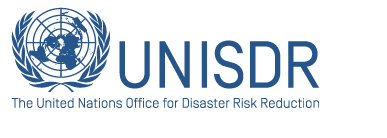- Coordination and the fact that this is a cross-cutting issue have been highlighted. What government areas worked with a higher level of coordination to achieve these goals and in terms of the world campaign?
-We had six work teams with different responsible agencies. The first team was from the Finance and the Chief Clerk’s Office, which has to do with all government resources (not only material but also human resources). Then there was the School of Public Administration which, along with the Civil Protection System, was responsible for training all public servants in many different areas. The goal was to have approximately 1,500 brigades of public servants in the city, prepared to be in less than one hour in any part of the city where there might be a problem.
Then there was the area of public security, which included a number of communications and transportation systems. This area had 35,000 officers, a fleet of eight helicopters, and medical rescue and emergency squads.
There were other areas grouped with the Secretariat of Public Security, such as firefighters, people in charge of communications and radio systems, etc. Another key area was the Secretariat of Health, which brought together all bodies that have immediate social responsibilities, such as all city hospitals and schools, and the local Secretariat of Education. Their tasks were related to establishing shelters in case of an emergency, as well as contributing to all aspects of integrated development. As you can see, there are different responsibilities on the part of the government. We could say the bodies that worked most closely with the international areas were the School of Public Administration and the Secretariat for Civil Protection. They are the ones that have to train public servants and gain experience for the future.
-This is a relevant issue and it needs continuity. How to ensure that actions will have continuity, regardless of a change of government or a change of party within the government?
-Fortunately, we don’t have that problem here. First, the person who won the elections was part of the civil protection cabinet, which means that he has knowledge about the background. Second, there hasn’t been an abrupt change from one administration to the next because it’s the same political party in office and you could say it’s practically the same team. Of course there have been changes, but these have not been too drastic.

Public policy has not changed either. Sometimes, the worst thing is that people, budgets, and public policy all change. I don’t see that on the horizon. In fact, I feel confident that we have continuity in the plans or, rather, the public policy that was designed for this objective. If there is no continuity, a large part of the efforts get lost.
Some policies are of important common interest and they have to involve everyone. It can’t be just a government policy. That’s true for water, for pollution reduction efforts in the city, and it’s also true for resilience.
|
-In 2006, when you were part of the city government during a third term of your party, in the lead by 20 percent, how did you integrate issues related to disaster risk reduction and resilience building?
-Within the body responsible for coordinating what we call civil protection, we created a secretariat. It is closely linked to what the international community has been developing regarding the concept of resilience.
This was our starting point. First, you need to have a coordinating body both with the capacity and the authority needed to avoid that it becomes an unimportant issue, especially because the tendency in complex city governments is to get absorbed in what is urgent, what matters right now.
You don’t have enough time to think about what is going to happen in 2, 3, 4, 5 10 or 20 years. In fact, in my experience in the city government, I have seen how some issues related to, for instance, resilience, can easily be put in the back burner. Then you must organize a government-level team because resilience is a cross-cutting issue. As such, it’s not the task of a given government area but of the entire government, of all the entities that belong to the executive branch, in this case the mayor’s office or the government of the federal district. I must add that, in the case of Mexico, the city has the legal authority needed to do so.
There are other cities in the world that do not have it because they follow other models. Regarding the model of Mexico city, law enforcement, police forces, criminal investigation, the transport system –the metro— and all aspects related to an emergency fall under the Head of Government. The city might have many different responsibilities in comparison to other cities in the world. To understand these responsibilities, we must know that the government of the Federal District has the legal power needed to organize all aspects related to emergency preparedness and prevention.
- We have talked about how to integrate the government team. How did you integrate other actors or decision-makers, such as the private sector?
- We created a citizen participation law where every colonia —that is every neighborhood— elects its own neighborhood representatives. They are elected, but they are volunteers. They make decisions every year about the budget for their neighborhood, and one of the things this network of citizen participation has worked on is the whole civil protection issue.
Another way of doing this was through our work with the chambers of commerce. In Mexico City, we have a social and economic council. There are also unions, businessmen, academia, all the government agencies, and the legislative and judicial branches. The council has taken on the important task that you mentioned.
We met with almost all the committees, and one of the topics of greatest importance to them, and to us, was the issue of how to prepare for a disaster. That was another way of integrating other stakeholders.
|




